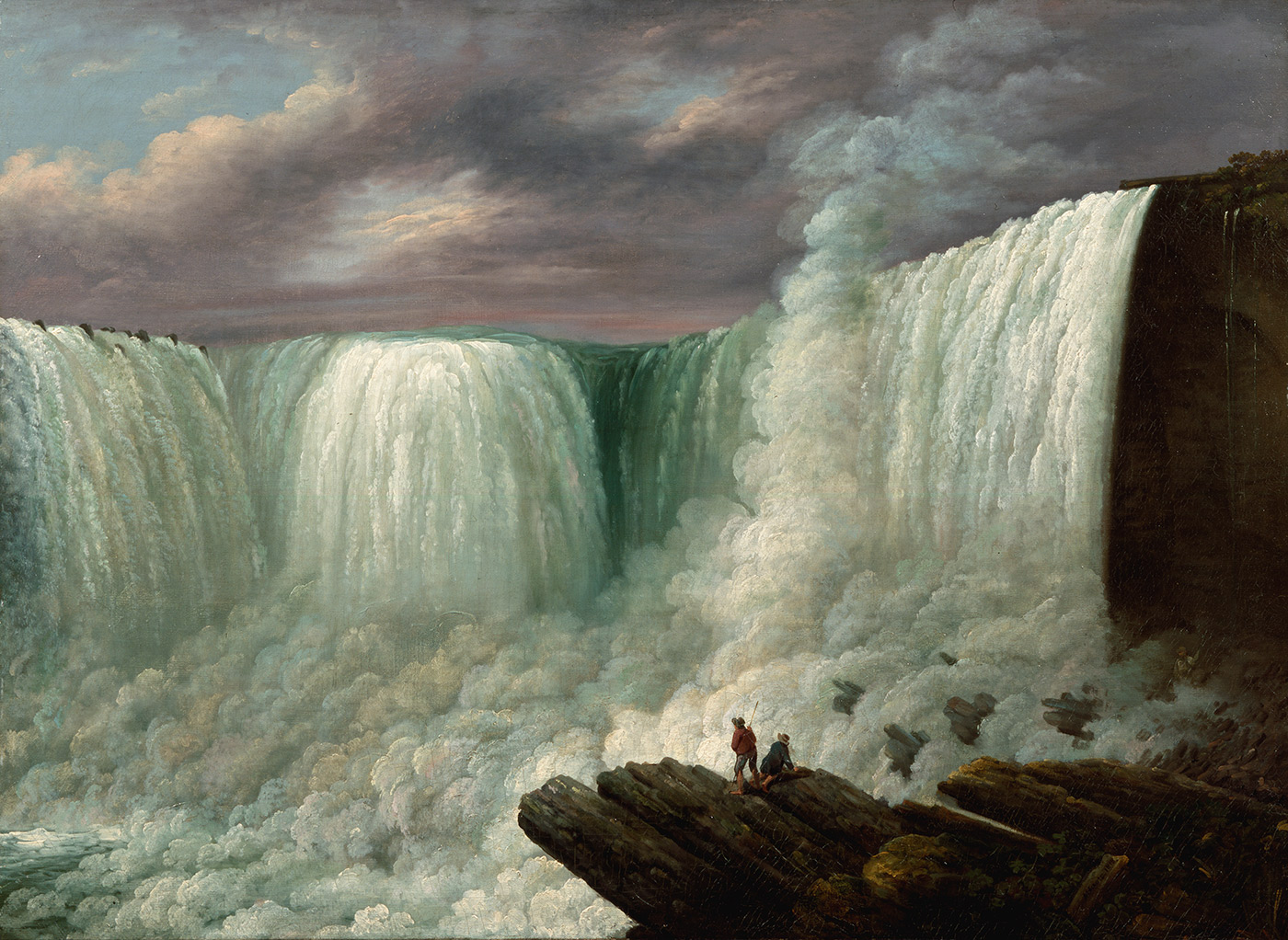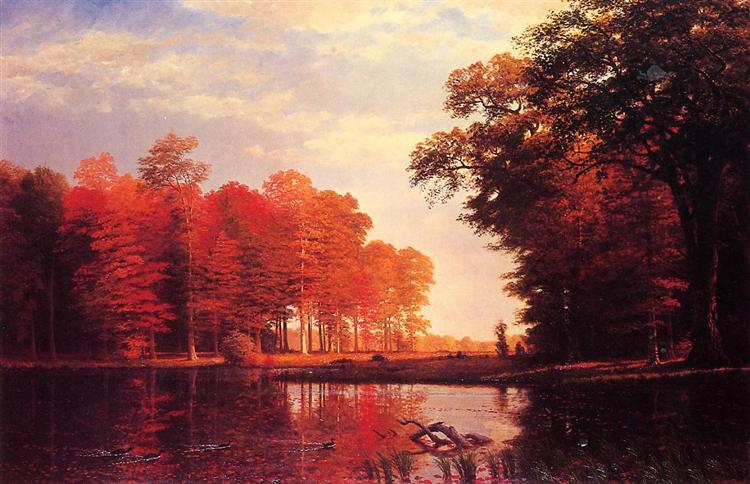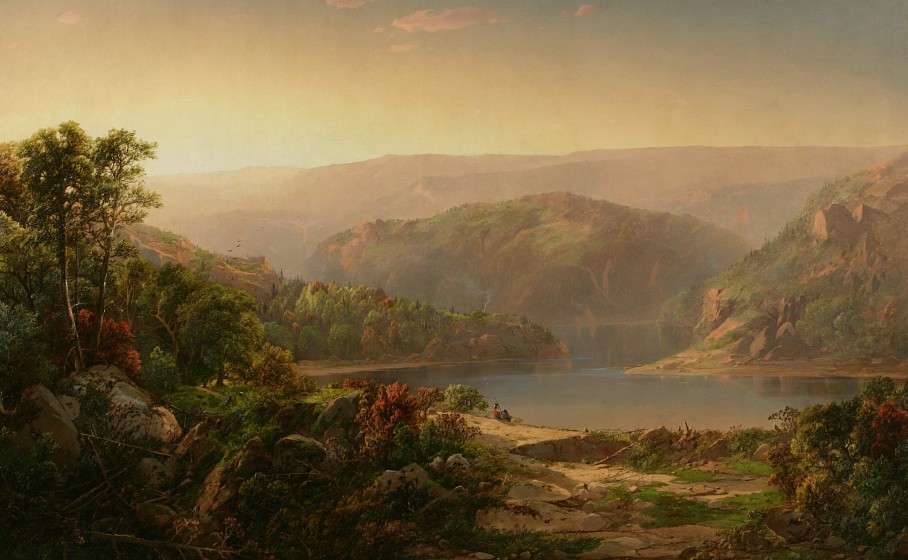Brandywine River Museum of Art
March 19 through June 12
A stunning array of over 40 paintings from the New-York Historical Society’s collection by renowned Hudson River School artists, including Thomas Cole, Asher Durand, Albert Bierstadt, Jasper Cropsey, John F. Kensett, and William T. Richards, will be on view for the first time at the Brandywine River Museum of Art from March 19 through June 12. Painted between 1818 and 1886, the works illustrate America’s scenic splendor as seen through the eyes of some of the country’s most important painters.
“The Hudson River School created some of the most beautiful paintings in American art. Their works forged a new vision for landscape painting and embodied the expansive and optimistic spirit of 19th- century America,” noted Thomas Padon, Director of the Brandywine River Museum of Art.
In the first decade of the 19th century, the expansive landscapes of the Hudson River Valley and adjacent areas, such as the Catskills and the Adirondack Mountains, inspired an elite group of American artists known as the Hudson River School. Coming together under the influence of British émigré painter Thomas Cole (1801–1848), they shared a philosophy and appreciation for the natural landscape. Today their collective works are considered the first uniquely American art movement. In their idyllic depictions of the landscape, these artists conveyed not only the majesty of America, but an image of man living in harmonious balance with nature.
The Poetry of Nature: A Golden Age of American Landscape Painting opens with seminal works by Thomas Cole and Asher B. Durand (1796–1886). The former artist first traveled up the Hudson in 1825. His tableaux capture the wildness of the American landscape. The latter frequently worked alongside Cole and was instrumental in leading the group after Cole’s untimely death in 1848. Cole’s romantic interpretations of the American landscape—represented in the exhibition by two paintings, one of a tranquil sunset view on the Catskill Creek and another of a sublime mountain landscape with jagged peaks piercing the clouds—demonstrate his mastery of perspective; he is able to convey vast open spaces and create rich atmospheric effects.
Durand favored tighter views and closely observed details of nature. Paintings in the exhibition will present his vivid compositions, from majestic mountain ranges to tranquil woodland interiors and studies of trees. Durand’s influential Letters on Landscape Painting (1855–1856), promoted the movement for plein air painting, calling such excursions, “hard-work-play.” As president of the National Academy of Design, he advocated for the landscape paintings by his Hudson River School colleagues at that institution and facilitated the patronage and rise of the Hudson River School.
Coinciding with an increase in leisure travel, the Hudson River painters also journeyed to regions noted for their beauty outside of New York State; New Hampshire, coastal New England, and even the Brandywine Valley were among the areas featured in their works.
The exhibition has been organized by the New-York Historical Society, which features one of the most renowned collections of Hudson River School paintings. Dr. Linda S. Ferber, the director emerita of The New-York Historical Museum and a leading authority on Hudson River School artists, is the curator for this extraordinary exhibition.
Excellent review (Some images added) - please read:
...“Woodland Brook” (1859), by Cole's close associate Asher Durand, has a grand scale and immersive quality, but is actually constructed of various elements to heighten the depth and drama of the scene.
The extremely detailed depictions of bark, leaves and dappled sunlight in “June Woods (Germantown)” by W.T. Richards adhere strictly to reality and serve to put you right on the shady path.
Speaking of drawing you in, the monumental “Autumn Woods” by Albert Bierstadt has such a razor-sharp glow in its depiction of fall foliage and a leaf-strewn stream that you can almost feel the autumn breeze.
Times of day were meticulously rendered as well,
shown in the glowing sky in “Seashore (Sunset on the Coast)” by John Kensett,
and the magnificent “Morning in the Blue Ridge Mtns., Virginia” by William Sonntag.
The clouds spread out for miles in “Sunset in the Berkshire Hills” by Frederic Edwin Church...
In the small painting “Catskill Mountains, Haying” by Thomas Hotchkiss, workers toil in a tiny field, still in harmony with nature but almost lost amidst all the natural splendor.
People do actually play a large role in the foreground composition of “Hudson River Valley From Fort Putnam, West Point” by George Henry Boughton. They are shown, in their 1800s finery, as they take in the view from a footpath over the ruins of the fort from the Revolutionary War...Another fine review






